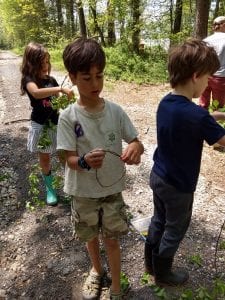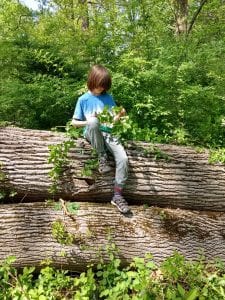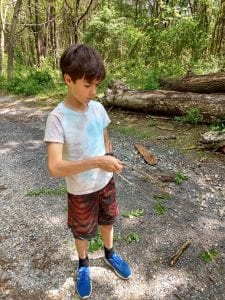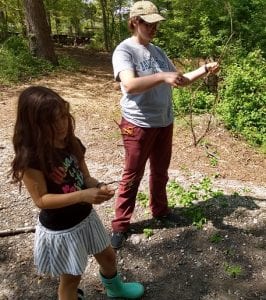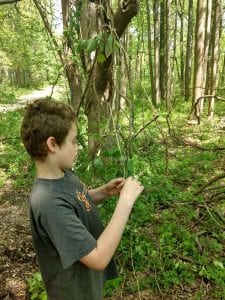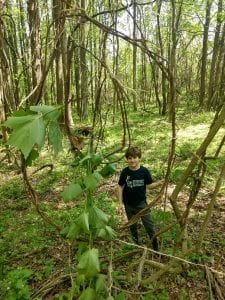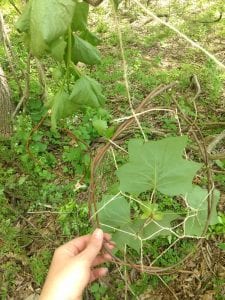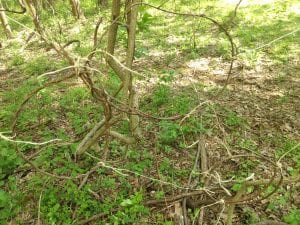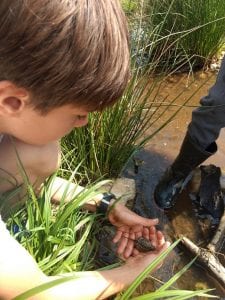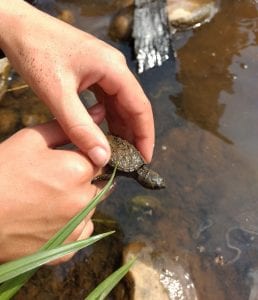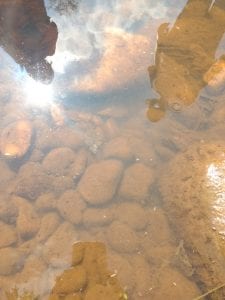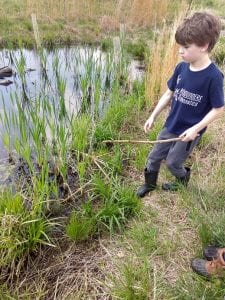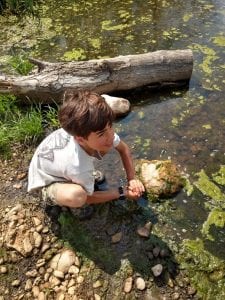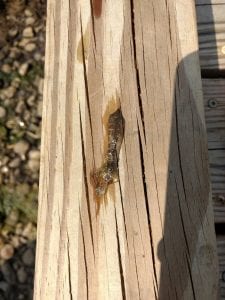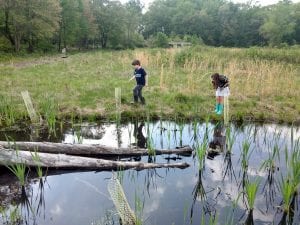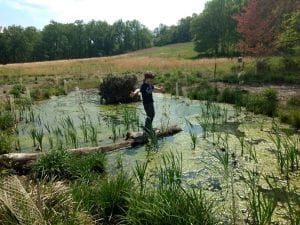4/30/2019
Today we finished learning about Richard Shilling and his amazing ephermeral artwork. Our focus today was creating a piece of art inspired by one of his art pieces pictured below called “Heard Through the Grapevine.” For our art we didn’t use grapevine but we did use non-native plant vine called Oriental Bittersweet. Since last week was Earth Day we continued our stewardship of nature by removing some non-native vines to create a piece of artwork.
To see more about this installation and other work by Richard Shilling click the link below:
https://www.richardshilling.co.uk/installation1.html
We clicked the vines and created rings similar to the ones created by Richard Shilling. We then used twine to tie our circles together and then connect them in our installation. We found a few pieces of nature pieces that we added to our artwork like the tops of the native Tulip Poplar that have fallen to the ground and the invasive Garlic Mustard. Some of us also wove designs into our circles, similar to the way Richard Shilling did in his art installation. Here we are working on making the vine circles:
Here is the finished product! Fittingly we placed the art installation in the forest attached to the native grapevine.
After finishing our installation we hiked down to the meadow and visited the pond at the base of the hill in the Pollinator Meadow. This pond is usually vernal, drying up by mid-spring and summer, but we’ve had such a wet winter and spring that there is still plenty of water. We explored around the pond finding frogs and tadpoles, water beetles, a dragonfly nymph and a dragonfly nymph exoskeleton (pictured below). Given how big this exoskeleton is the dragonfly that was inside likely went through metamorphosis and is now a flying adult dragonfly. Dragonflies start their lives in the water, living there for many years before emerging as flying adults, only to live a few months at most. We also made some algae balls and made a very cool discovery!
In the small pool by the bridge that leads to the stream that the pond drains into, Lev and Shama found two baby snapping turtles! They blend in so well that many people walked around this area looking for frogs and didn’t spot them. This is a perfect example why we remind everyone how important it is to watch where you step and to walk very slowly. These ponds and streams are nurseries to baby animals, including snapping turtles!
Here is some basic information and cool facts about the Eastern Snapping Turtle:
Finding these two babies is very exciting since we have only ever seen baby snapping turtles at Irvine. Where are the adults and how do they find these places to lay their eggs? The largest snapping turtle that we have found at Irvine was about the size of an adult person’s hand. That is still a young turtle. It’s amazing how animals can find their way to these wetland areas from far away places.
Can you spot the baby snapping turtle hiding in the water below?

